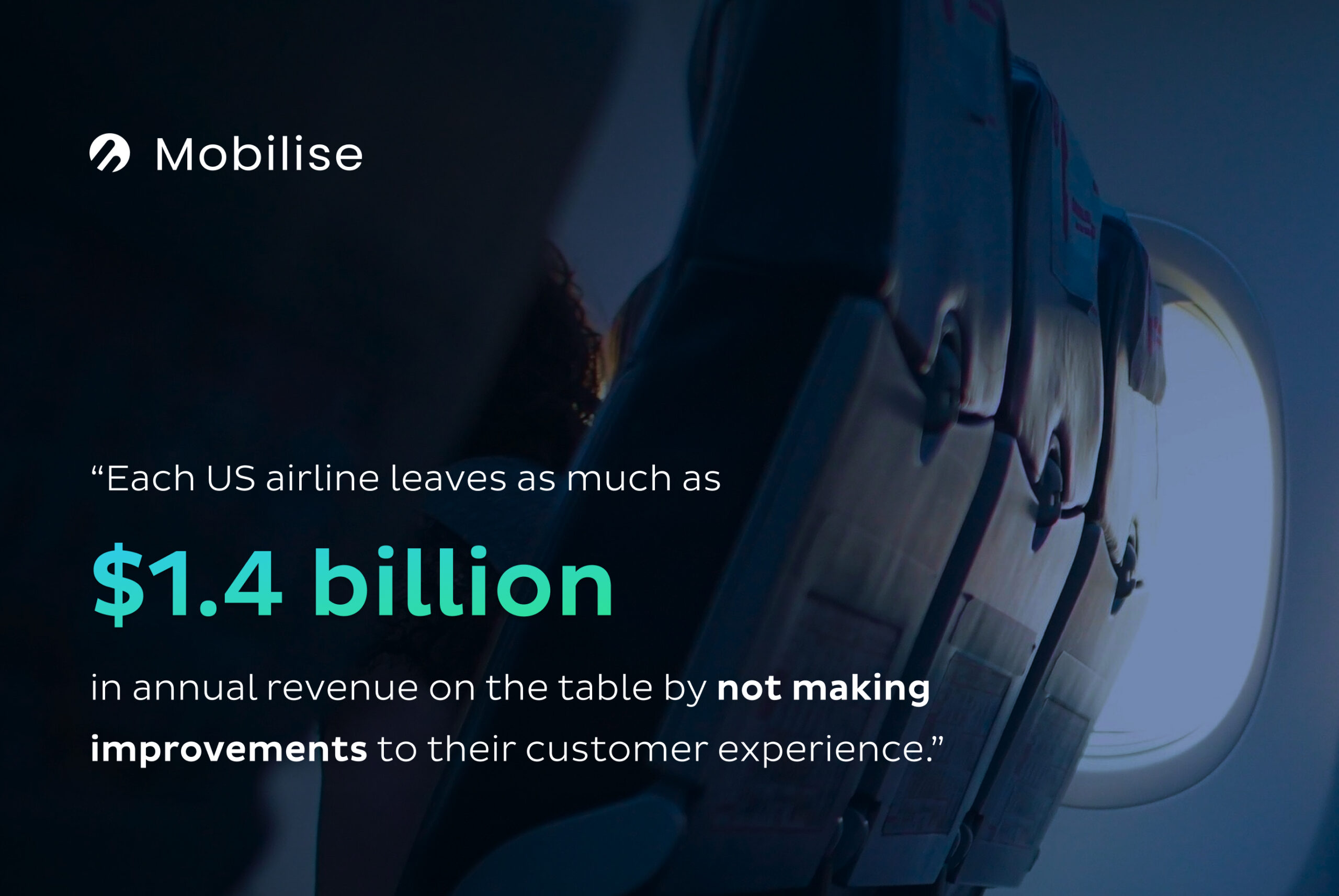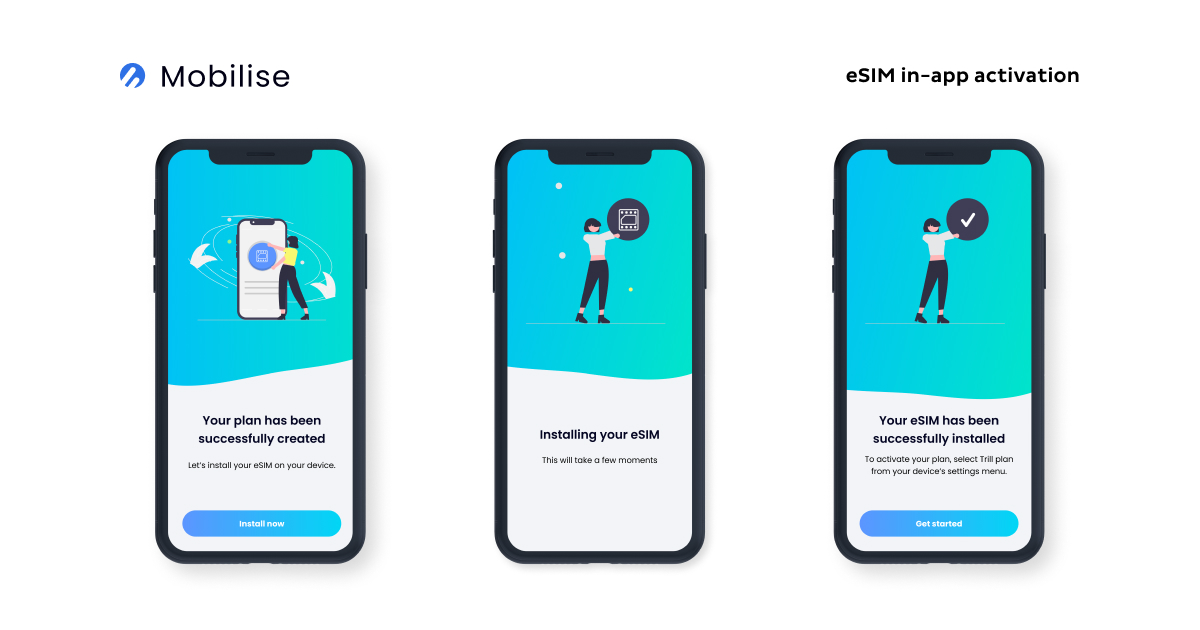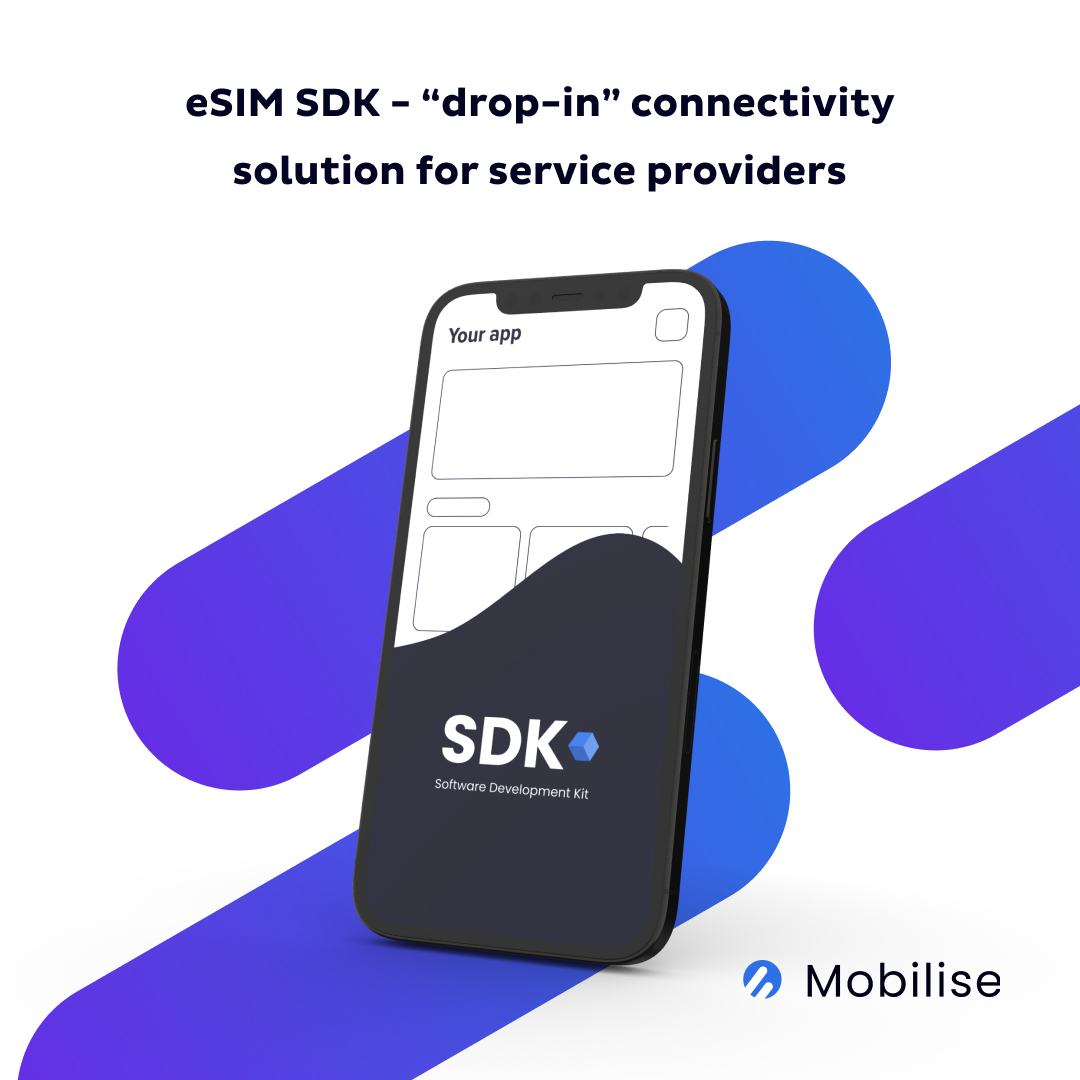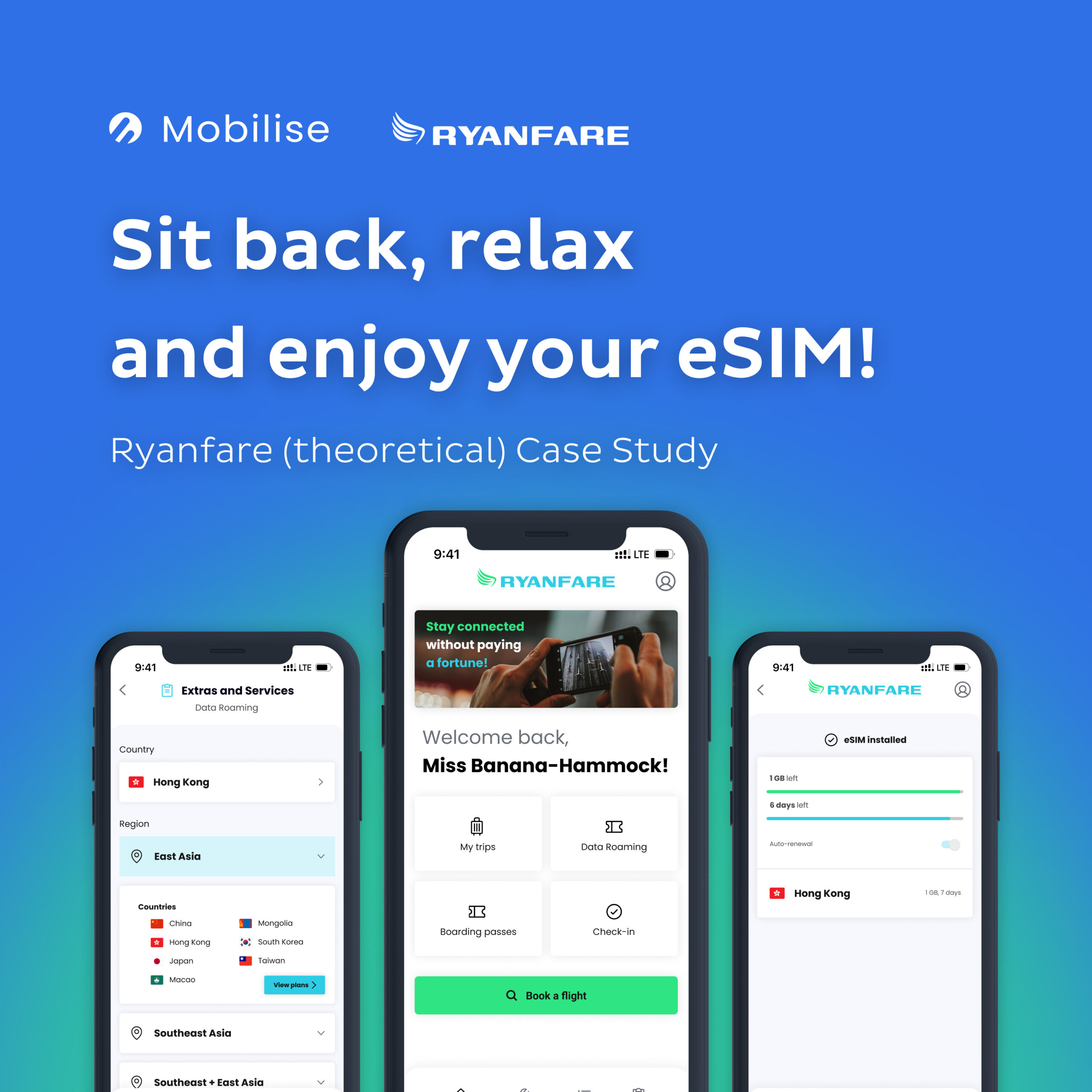eSIM is a significant innovation that is transforming the communication landscape. With its diverse applications across a range of industries, eSIMs are particularly set to revolutionise the airline industry as an ancillary product. It has the potential to become a game-changer for the travel industry, particularly as an airline ancillary.
More specifically, this means providing passengers with uninterrupted internet access. This connectivity enhances the overall travel experience and allows airlines to personalise services, engage with customers, and gain the potential for higher ancillary revenue.
However, to stay competitive in an ever-evolving industry, airlines must go beyond and diversify their core proposition. By expanding their offerings beyond traditional flight service, airlines can cater to different travel needs and capture a larger market share. This adaptability ensures long-term success in an interconnected world where customer preferences and travel trends are constantly changing.
In this article, we will delve into the significance of eSIM as an airline ancillary and how it can contribute towards a more seamless and enjoyable travel experience.
TL;DR
- eSIM technology is transforming the airline industry as a significant ancillary product.
- eSIM offers a seamless travel experience, making it an appealing prospect for airline ancillary services.
- Ancillaries are an indispensable part of an airline’s revenue model, providing opportunities for enhanced customer experience and generating considerable revenue for airlines.
- Integrating eSIMs into an airline’s ancillary services portfolio can unlock a completely fresh revenue channel for airlines.
- eSIM technology not only enhances the customer experience but also helps airlines enhance their brand image and boost passenger loyalty.
What is an airline ancillary?
Ancillary services are supplementary services that enhance the core offering of a business.
They provide added value and convenience to customers, often resulting in increased satisfaction and loyalty. Examples of ancillary services can range across various industries.
When we talk about airline ancillaries, we’re referring to the vast array of services that airlines offer beyond the ticket fare itself. These aren’t just the services that enhance your flying experience, but also those that contribute towards the bottom line of the airline industry.
Airline ancillary service examples
- Extra luggage.
- Travel insurance.
- Foreign exchange currencies.
- Car hire.
- Luggage transportation.
- Theatre and event tickets.
- Tour guides.
- Equipment hires.
- Travel SIM card/eSIMs.
eSIM as an airline ancillary
eSIMs are the digital evolution of the traditional physical SIM card but are especially beneficial for the modern traveller. This little piece of technology allows you to access a mobile network without the need for a physical card. It’s reprogrammable, offering the flexibility to switch between network providers, fitting seamlessly into the mobile-dependent lifestyle of today’s globetrotter. This unique trait makes the eSIM an excellent prospect for the airline ancillary portfolio.
For more information about eSIM, check out our eSIM whitepaper, where we go into more detail. We also compiled 30 FAQs about eSIM explained!
Integrating an eSIM travel ancillary offers passengers a fully digital customer journey. Passengers no longer need to worry about procuring a physical SIM card, adding a layer of convenience to their journey. This becomes particularly appealing when travelling abroad, where connectivity can pose challenges. With eSIM, travellers can connect to their preferred network right upon landing, waving goodbye to the days of hunting down local SIM cards.
Offering eSIM for airlines not only brings about an upgrade to the customer experience but also unlocks a fresh avenue of revenue for airlines. With this addition, the palette of ancillaries becomes even more vibrant, delivering a win-win situation for both the airline and the passenger. Therefore, the potential for eSIM to transform the airline ancillary landscape is vast, opening a new chapter in the digital transformation of the aviation industry.
RECOMMENDED READING
The benefits of eSIM for airline ancillary
- Ancillary revenue boost
- Airlines can negotiate and implement cost-effective data plans based on their specific needs and avoid unnecessary expenses associated with traditional SIM card management. These two combined can boost the airline’s ancillary revenue.
- Competitive advantage
- Future-proof your brand by offering innovative solutions that meet evolving consumer demands and enable new business models.
- Enhanced passenger experience
- Airlines that invest in improving their customer experience have the potential to capture significant additional revenue. It’s estimated that each US airline leaves as much as $1.4 billion in annual revenue on the table by not making improvements to their customer experience. This revenue can be captured before, during, or after the flight when airlines can establish customer loyalty and generate ancillary sales. Ancillary offerings often provide higher margins and require less complexity and effort compared to the primary product of flying the passenger.

- Operational efficiency
- eSIM can streamline processes and enhance airline operations through remote provisioning and fast and fully digital onboarding.
- Improving customer experience
- Alongside other airline ancillary services, such as travel insurance or car hire, eSIMs contribute to creating an end-to-end traveller’s experience within one app/through one company. eSIM technology empowers airlines to offer personalised connectivity packages, allowing passengers to choose plans that suit their specific needs and preferences.
- Improved customer satisfaction
- Passengers highly value the ability to stay connected during their flights and beyond. By offering reliable and seamless connectivity through eSIM, airlines can meet this demand and enhance the overall customer experience.
- Customer retention boost
- Airlines can tap into this revenue potential by offering a seamless and connected travel experience. Passengers can stay connected to work, stream entertainment, and access real-time information when travelling in a new country. This level of connectivity not only improves the overall travel experience but also presents opportunities for airlines to engage with customers through personalised services and targeted offers to further improve customer retention.
- Environmental impact
- The elimination of physical SIM cards and associated packaging contributes to a more environmentally friendly approach, aligning with the growing emphasis on sustainability in the airline industry + eSIM promotes paperless transactions, reducing the need for physical documentation related to SIM card distribution and management.
- Partnership opportunities
- eSIM as an airline ancillary opens up the opportunity for collaborations between airlines and eSIM providers for mutual benefits.
Benefits of embedded connectivity – for passengers
- Seamless internet access upon arrival at the destination
- With eSIM, travellers can purchase a data bundle before their departure and activate it upon reaching their destination. This eliminates the need to search for local SIM cards or rely on unreliable public Wi-Fi networks. By having internet access from the moment they step off the plane, travellers can instantly connect with their loved ones, access maps, search for information, and stay connected to important online services.
- Convenience
- The entire process, from purchasing and activating the eSIM, happens online and is often integrated into the flight booking process. Passengers can conveniently select a data bundle that suits their needs, pay for it securely, and receive the necessary activation details before they travel. This eliminates the need for physical SIM cards, manual activation processes, and the hassle of dealing with different providers in foreign countries.

- Affordability
- Traditional mobile data roaming can be expensive, and travellers often resort to costly alternatives such as hotel Wi-Fi. However, eSIM offers cost-effective data options that are specifically designed for travellers. By purchasing a data bundle in advance, travellers can avoid exorbitant roaming charges and save significant amounts of money.
- Timesaving
- eSIM eliminates these hurdles and allows travellers to handle the entire process online, well in advance of their departure. This time-saving aspect ensures that travellers can focus on enjoying their journey without the stress and delays associated with acquiring and activating physical SIM cards.
- Security
- eSIM removes the threat related to device theft or loss. eSIM helps mitigate the security risks related to device theft or loss. Traditional SIM cards can be easily removed from one device and inserted into another, potentially allowing unauthorised access to personal data.
Still not convinced? Check out our eSIM for travel survey! We commissioned some research on consumers and their experiences when travelling abroad. Particularly with how they stay connected during their travels using eSIM.
How to introduce eSIM to an airline ancillary services portfolio?
We’ve got the solution for you – our eSIM SDK.
Our Embedded Connectivity solution provides endless benefits to airlines looking to expand their revenue streams and improve customer experiences. It’s a “plug-and-play” solution that can be easily integrated into an existing app with no customisation required.

With low set-up fees and quick set-up, taking less than a week until final implementation, our eSIM SDK allows airlines to offer eSIM packages to their customers as an add-on. Featuring in-app eSIM activation in under 60 seconds without the hassle of QR codes or physical SIM swapping for your passengers.
Don’t just take our word for it! We’ve also created an airlines and eSIM case study theoretical case study which shows you exactly what it would look like. The purpose of it is to show how Embedded Connectivity and our eSIM SDK solution can boost airlines’ ancillary and total revenue with little upfront cost or operational effort.

RECOMMENDED READING
Conclusion
Airlines must stay in tune with emerging technologies that elevate passenger experiences. The inclusion of eSIM in an airline’s ancillary services portfolio is a powerful use of tech transformation and aiding digital transformation. With eSIM, airlines aren’t just enhancing their digital capabilities but also exploring new revenue streams. The fusion of comfort and connectivity for passengers, and financial boon for airlines, could be revolutionary for the longevity and reputation of an airline.



